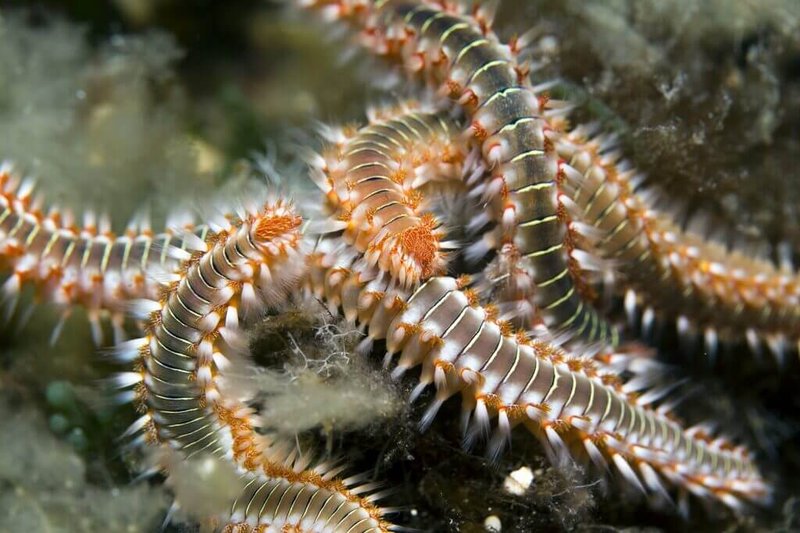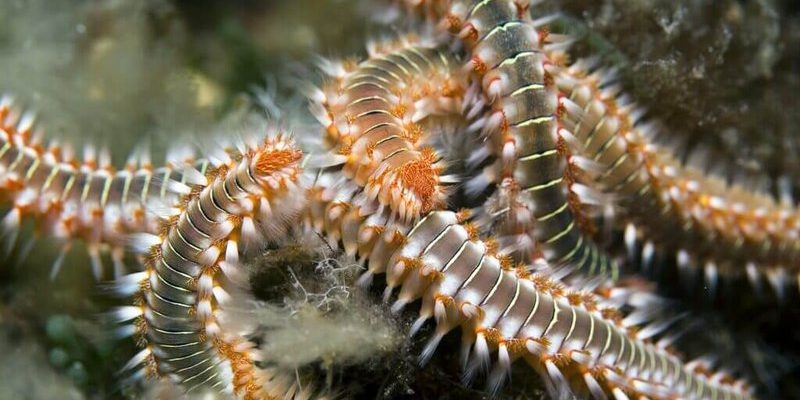
Bristle worms, particularly those of the genus *Eunice*, are often found lounging in coral reefs or sandy bottoms. But don’t let their often colorful appearances fool you; some can quickly become your worst nightmare. They can munch on corals, clams, and even small fish if left unchecked. So, before you toss in another coral frag, let’s figure out how to identify potential pest species. Understanding what’s lurking beneath the surface can save you a lot of stress later on.
Understanding Bristle Worms: The Basics
To get started, it’s essential to know what bristle worms are. These creatures belong to the phylum Annelida and are segmented worms. Picture a long, wiggly tube with bristles sticking out—hence the name! They come in various shapes, sizes, and colors, adding a unique flair to any aquarium. However, their beauty can sometimes mask a destructive nature.
There are over 10,000 species of bristle worms, but only a few can qualify as pests. The good ones help break down waste and keep your tank clean. It’s like having a trusty cleaning crew at your service. But then, you have the bad guests, which can harm your delicate marine life. Knowing what to look for will help you make sure your party stays fun and doesn’t turn into a disaster.
Identifying Pest Species Of Bristle Worms
Now, let’s break down how to spot those pest species. First and foremost, look for size—pest bristle worms can grow quite large, often reaching lengths up to 12 inches. What’s more, they tend to be quite colorful—think reds, greens, and yellows. But here’s the catch: many colorful bristle worms are harmless. So how do we distinguish them?
One key identifier is the presence of **setae**, which are the bristles that line their bodies. Pest species usually have long, sharp bristles that can be harmful to fish and corals. If you see a bristle worm that looks like it’s ready to poke you, it’s probably one to steer clear of. However, the harmless ones often have shorter, softer bristles.
Physical Characteristics to Watch For
To put it simply, here are the physical traits that can help you identify harmful bristle worms:
- Length: Pest species can be over 6 inches long.
- Bristle Type: Look for long, sharp bristles; the softer ones are usually okay.
- Color: Bright and assorted colors can indicate a pest, but not always.
- Body Segmentation: Take note of the number of segments; pest species often have a distinct segmentation pattern.
Behavioral Signs of Pest Bristle Worms
Aside from physical characteristics, the behavior of these worms can give you clues as well. Pest bristle worms are often more active—zooming around your tank at night when the lights are out. If you notice something skimming through the substrate or cruising over your corals once the sun goes down, it might be time to investigate.
You might be wondering what they’re up to. Unfortunately, they’re often hunting for food, and that food can include your prized corals or snacking on sick fish. If they start showing up regularly, it’s a red flag.
Signs of Infestation
Watch for these behavior patterns that could signal an unwanted group of bristle worms:
- Frequent Sightings: Regularly spotting them when the tank is dark.
- Damage to Coral: If you see your corals starting to waste away, check for bristle worms.
- Missing Fish: If you notice your fish count dwindling, their appetite may be too aggressive.
Potential Damage by Pest Bristle Worms
When pest bristle worms set up shop in your aquarium, they can cause more than just a cosmetic issue. They can be detrimental to the health of your tank. Imagine finding that your beautiful coral has mysteriously started to dissolve—yep, that’s a potential side effect of these pests.
In addition to corals, they can nibble on clams and even compete with your fish for food. Their insatiable appetite can throw your entire ecosystem out of balance, leaving many creatures stressed or even dead.
Real-Life Examples
There are plenty of stories within the aquarium community about pest bristle worms wreaking havoc. Some enthusiasts have shared tales of their favorite corals disappearing overnight after they spotted these pesky worms. Others have lost fish that were harassed relentlessly, leading to stress and illness.
The takeaway here is clear: If you suspect pest bristle worms are an issue, it’s essential to act quickly. Ignoring the signs could send your tank into a downward spiral that’s hard to recover from.
Managing and Controlling Pest Bristle Worms
If you’ve identified pest species of bristle worms, don’t panic! There are several ways to manage their population effectively. First, you can physically remove them using tweezers or a siphon. It’s best to do this during the day when they’re hidden, as they’re less active.
Consider introducing natural predators, like certain types of fish or invertebrates, that will help keep their numbers in check. Sometimes, adding a beneficial echinoderm or another scavenger can lessen the load on your tank.
Prevention Tips
To better prevent future invasions, consider these tips:
- Regular Monitoring: Keep an eye on your tank and do regular inspections.
- Maintain Water Quality: Healthy tanks are less susceptible to infestations.
- Avoid Overfeeding: Reducing uneaten food can limit their food supply.
Bristle worms can be a fascinating part of an aquarium, but it’s crucial to differentiate between the beneficial and the harmful types. By keeping an eye on size, physical features, and behavior, you’ll be well-equipped to spot any pest species that pop up in your tank.
Staying proactive and monitoring your aquarium environment will go a long way in preventing these little nuisances from becoming a major issue. Remember, it’s about balance—keeping the good while politely saying goodbye to the bad. Don’t hesitate to act if you see signs of pests; a healthy aquarium is a happy aquarium!

